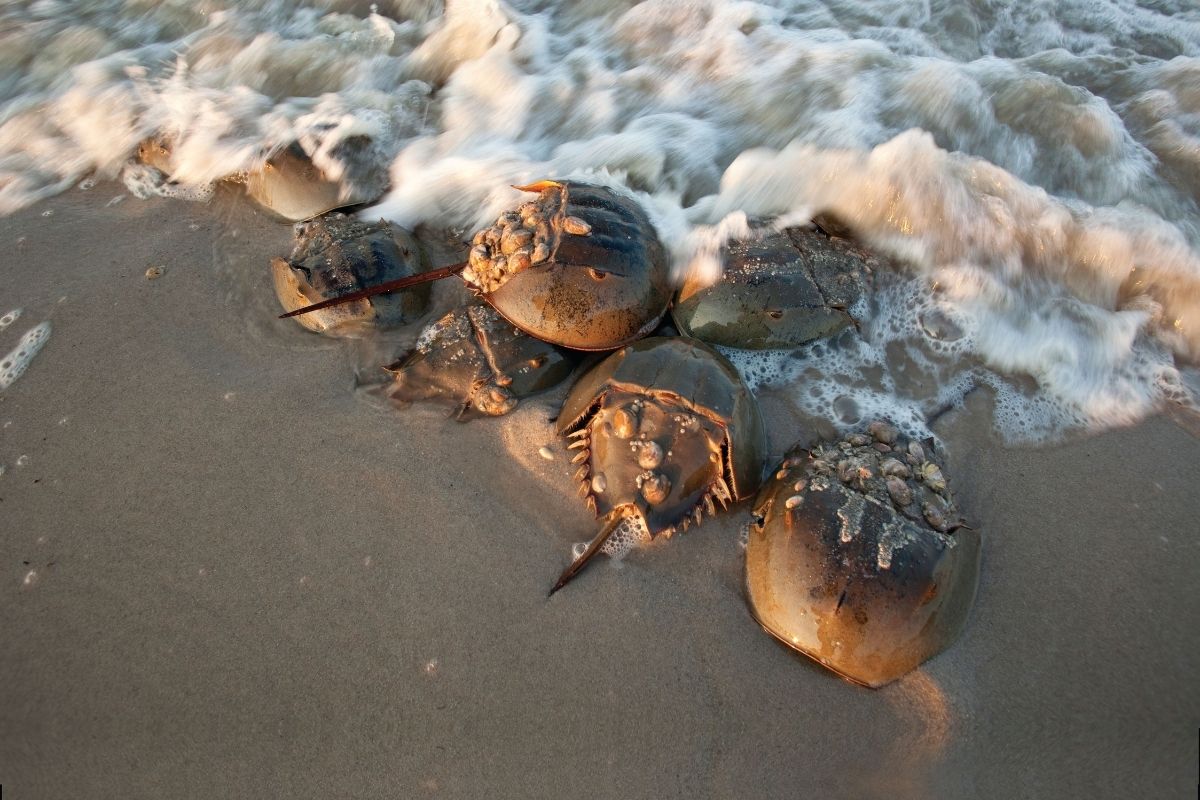The Connecticut General Assembly’s Environment Committee voted to save the state’s horseshoe crabs and the wildlife who depend on them for survival. Last week, the Committee passed HB 5140, which prohibits the hand capture and killing of horseshoe crabs from the waters and shoreline of the state. The bill moves on to the House and Senate for a vote.
“FoA is relieved that science prevailed among the legislators on the Environment Committee who voted to stop the reckless, unnecessary killing of the state’s beloved ancient mariners for bait so people could eat smoked eel and conch fritters,” said Priscilla Feral, president of Friends of Animals, which helped draft the bill that is being championed by Rep. Joe Gresko. “Horseshoe crabs don’t need more cumbersome DEEP regulations; this legislation delivers the protection they need immediately before it’s too late. We look forward to the bill getting across the finish line.”
Dwindling numbers of horseshoe crabs along Connecticut and New York shorelines have led to their functional extinction in Long Island Sound, according to Jennifer H. Mattei, a member of the International Union for the Conservation of Nature’s Horseshoe Crab Specialist Group and a biology professor at Sacred Heart University. That means horseshoe crabs have become too rare to fulfill their crucial role in the ecosystem.
The Atlantic Marine Fisheries Commission downgraded the stocks of horseshoe crabs in the NY region, including the Sound, to Poor in 2019. Seeing the writing on the wall, legislators have already made Westbrook, West Haven, Milford and Stratford no-kill zones. Still, Connecticut issues about 15 killing permits a year so horseshoe crabs can be used as bait to kill eel and whelk for consumption. Connecticut’s quota for its annual haul is still an appalling 48,689.
DEEP’s new proposed regulations would still allow each permit holder to kill 150 horseshoe crabs per day from May 22-July 7, excluding weekends and 5 days around the full moon in June. That means theoretically that each license holder could still kill a staggering 4,350 each season. And these numbers don’t address poaching, which is clearly is going on from eyewitness testimony submitted during the public hearing.
Humans don’t need to eat eel and whelk to survive, however, migratory birds do need to eat horseshoe crabs’ eggs, especially the threatened red knot. In 2021, fewer than 7,000 red knots were found in the Delaware Bay, a key spring stopover habitat. That’s less than a third found in 2020.
Without sufficient horseshoe crab eggs to feed on, migratory birds run out of energy and die before reaching their breeding grounds. Horseshoe crabs are also an important source of food for other wildlife such as sea turtles, and species such as anemones, barnacles, oysters and seaweed use horseshoe crab shells as homes.
“Horseshoe crabs have figured out how to harmonize with the environment to last half a billion years. Humans can really learn a thing or two from them,” Feral said.

